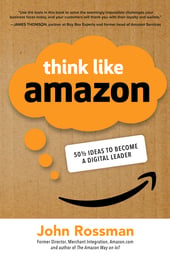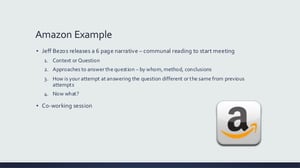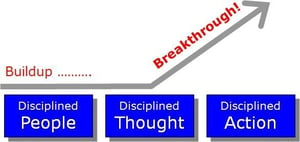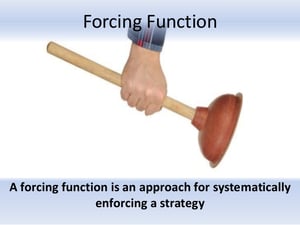I love to write. Most people I’ve discovered, do not.
WARNING: You’re probably not going to implement what I’m suggesting here.
Why?
It’s too much work.
Jeff Bezos’ 3 Rules to Having an Efficient Meeting
How many of your meetings start with silence?
Inc. Magazine’s video provides Jeff Bezos’ 3 Rules on more efficient meetings.
At :40 it explains the rule of no PowerPoints/why do narratives. At 1:14 why meetings start with silence.
CLARITY
Business innovation expert and author Greg Satell believes the discipline of writing ideas out is at the heart of how Amazon’s innovation process can be replicated:
At the heart of how Amazon innovates is its six-page memo, which kicks off everything the company does. Executives must write a press release, complete with hypothetical customer reactions to the product launch. That is followed by a series of FAQs, anticipating questions customers, as well as internal stakeholders, might have.
Executives at the company have stressed to me how the process forces you to think things through. You can’t gloss over problems or hide behind complexity. You actually have to work things out. All of this happens before the first meeting. It’s a level of rigor that few other organizations even attempt, much less are able to achieve.
I don’t believe there is a bigger problem in business than clarity.
“The single biggest problem in communication is the illusion that it has taken place.” —George Bernard Shaw
 How many times has this happened in your workplace?
How many times has this happened in your workplace?
Why do programs and projects take too long, go over budget, become bloated, and fail to deliver expectations?
The biggest root cause is failing to accurately define the end state at the beginning.
John Rossman’s Think Like Amazon: 50 1/2 Ideas to Become a Digital Leader, Idea 44: Writing ideas and proposals in complete narratives results in better ideas, more clarity on the ideas, and better conversation on the ideas. You will make better decisions about what to do and how to do it. The initiatives will be smaller and less risky. Writing narratives is hard, takes a long time, and is an acquired skill for the organization. High standards and an appreciation for building this capability over time are required.
Innovations are not ideas; neither are they attempts or prototypes. Innovations consist of new capabilities that affect customers and generate new revenue, improve quality, or decrease costs.
The fundamental mistake leaders make on innovations is not seeking clarity, especially regarding the customer experience.
Amazon gains clarity for its innovations through narratives.
Narrative’s Structure
Narratives at Amazon are two- or six-page documents written in complete sentences. Here's how Bezos' describes narratives:
%20.jpg?width=600&name=6%20Page%20Narative%20(Amazon)%20.jpg) A narrative must be expressly tailored to the situation based on the topic, the timing in the initiative, and the audience.
A narrative must be expressly tailored to the situation based on the topic, the timing in the initiative, and the audience.
Rossman explains, “Data, charts, and diagrams can be included, but they must be explained in the narrative. Appendix material is also allowed. I believe that the discipline of writing out ideas is at the heart of Amazon’s innovation process and can be replicated to the same effect.
A narrative must be constructed of complete thoughts, complete paragraphs, complete sentences. You may include charts, numbers, and diagrams, but those items must be explained in the narrative. Other than that, there are no rules on structure, and the structure the authors choose will depend on the topic, the timing in the discussion cycle, and the audience.”
The narrative first focuses on the customer: “Who are the customers? What benefits are we bringing them? What problems are we solving for them? Why would this idea delight them?” Sections after that might include what the customer experience would be, dependencies or requirements, metrics to measure success, business case, and key risks.
Deliver Clarity
Amazon Leadership Principle 3 is “Invent and Simplify.” It drives clarity of thought through a written narrative as a key operational approach to get both invention and simplification.
“Almost every meeting which involves making a business decision is driven by a document,” says Llew Mason, Amazon VP, Consumer Engagement.
“One of the great things about a written document is that it drives a lot of clarity in the process.”
Clarity in thinking.
Clarity on what you decide to do.
Clarity on how the idea will affect users and the business.
Watch Llew Mason, then VP of Supply Chain Optimization Technology explain the writing culture at Amazon.
I believe Great Minds think on paper.
QUESTIONS TO CONSIDER
- Do ideas and plans suffer from incomplete thought?
- Do projects get bloated with size and unnecessary complexity?
- Do executives understand and influence the details of a proposal sufficiently to make a well-informed decision?
Does your business need to reconsider its innovation or meeting rhythm practices? We can help. Please contact us today to schedule an exploratory meeting.
Growth demands Strategic Discipline.
To build an enduring great organization, requires disciplined people, disciplined thought,  disciplined action, to produce superior results, and make a distinctive impact in the world.
disciplined action, to produce superior results, and make a distinctive impact in the world.
Discipline sustains momentum, over a long period of time, laying the foundations for lasting endurance.
A winning habit starts with 3 Strategic Disciplines: Priority, Metrics and Meeting Rhythms. Forecasting, accountability, individual, and team performance improve dramatically.-2.jpg?width=300&name=3%20Disciplines%20of%20Execution%20(Strategic%20Discipline)-2.jpg)
Meeting Rhythms achieve a disciplined focus on performance metrics to drive growth.
Let Positioning Systems help your business achieve these outcomes on the Four most Important Decisions your business faces:
|
DECISION |
RESULT/OUTCOME |
|
PEOPLE |
|
|
STRATEGY |
|
|
EXECUTION |
|
|
CASH |
|
Positioning Systems helps mid-sized ($5M - $250M) business Scale-UP. We align your business to focus on Your One Thing! Contact dwick@positioningsystems.com to Scale Up your business! Take our Four Decisions Needs Assessment to discover how your business measures against other Scaled Up companies. We’ll contact you.
 NEXT BLOG – Forcing Function - Write a Press Release on Your Innovation
NEXT BLOG – Forcing Function - Write a Press Release on Your Innovation
A key step in Narratives is to Write a Press Release for the future on how customers will respond, what the success of your innovation will become. It’s something Amazon calls a Forcing Function, which narratives are as well. We’ll explore Innovation Press Releases and the value of Forcing Functions next blog.






.jpeg?width=150&height=135&name=Hand%20with%20marker%20writing%20the%20question%20Whats%20Next_%20(1).jpeg)

